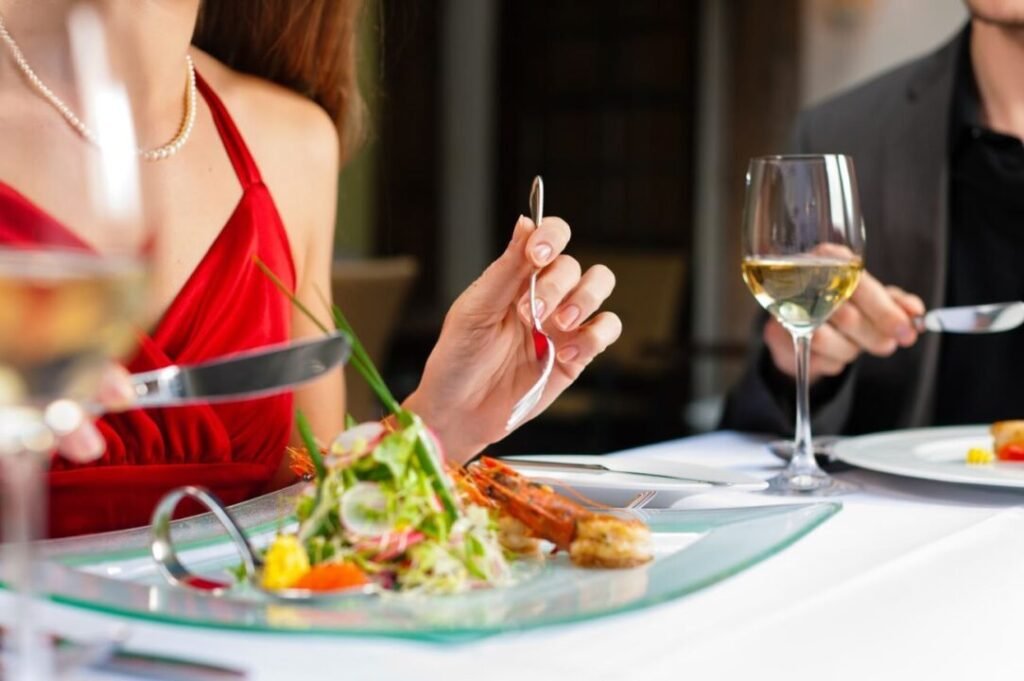As you savor a meal today, have you ever pondered how table manners have shifted through the corridors of time?
Picture the grandeur of ancient feasts in Rome, the majestic banquets of the medieval era, the graceful elegance of Renaissance dining, and the rigid formalities of Victorian meals.
Each epoch reveals a tapestry of customs reflecting societal values and cultural nuances.
But wait, the evolution doesn’t halt there. Stay tuned to discover how modern dining customs intertwine social dynamics, global influences, and a zest for diverse culinary experiences, shaping the way we gather around the table.
Ancient Dining Etiquette
Ancient dining etiquette reflected a complex mix of societal norms and rituals that governed interactions at the dining table. In the Roman feasting rituals, dining wasn’t just about sustenance but a social event filled with symbolism and hierarchy.
The Greeks, on the other hand, valued moderation and believed in the importance of both food and intellectual discussions during meals.
Roman feasts were extravagant affairs where seating arrangements denoted social status. The host played an essential role in setting the tone for the meal, ensuring guests were entertained and well-fed.
Meanwhile, Greek dining traditions emphasized the idea of symposia, where men gathered to discuss philosophy, politics, and poetry over wine and food.
Understanding these ancient dining customs provides insight into the values and beliefs of these civilizations. It highlights the importance placed on communal dining, social hierarchies, and intellectual pursuits.
By exploring these traditions, one can appreciate how dining etiquette has evolved over time while still retaining elements that resonate with contemporary dining experiences.
Medieval Banquet Traditions
The pivotal feasting customs of Medieval banquets carried forward the grandeur and elaborate dining rituals of earlier civilizations, shaping a new era of dining traditions.
In Medieval times, feasting traditions weren’t merely about sustenance but also about spectacle and social hierarchy. Banquets were elaborate affairs, with tables adorned with rich tapestries and exotic centerpieces, creating a lavish ambiance for the noble guests.
Medieval etiquette played a vital role in these banquets, dictating everything from seating arrangements based on hierarchy to the use of specialized eating utensils.
Guests were expected to display refined manners, such as using napkins and refraining from belching or slurping, to demonstrate their sophistication and breeding. The concept of chivalry also influenced dining customs, with knights adhering to codes of conduct even at the dining table.
Renaissance Table Manners
During the Renaissance period, table manners evolved to reflect the refinement and elegance characteristic of the era’s cultural revival.
Noble etiquette played a significant role in shaping dining customs, emphasizing sophistication and grace at the table. In this era, meals weren’t just about sustenance but also a display of one’s status and sophistication.
Renaissance feasting traditions were elaborate affairs, with an emphasis on presentation and manners.
It was considered improper to start eating before the host or the most important guest had begun. Utensils were becoming more common, and diners were expected to use them with finesse. Hands were to be kept above the table, and polite conversation was encouraged.
Noble etiquette dictated that one shouldn’t slurp, burp, or speak with food in the mouth. Additionally, it was customary to wipe one’s hands and mouth frequently with a napkin.
These refined manners highlighted the importance of social status and decorum, setting the stage for the dining customs to come in later centuries.
Victorian Dining Rules
Evolution from the refined dining customs of the Renaissance era, Victorian dining rules brought a new level of etiquette and formality to the table, emphasizing propriety and social decorum.
During the Victorian era, dining etiquette reached its peak, with strict rules governing every aspect of a meal. Dressing appropriately for dinner was essential; gentlemen were expected to wear formal attire such as tailcoats, while ladies adorned themselves in elegant gowns and gloves.
Social hierarchy played a significant role in Victorian dining customs.
Seating arrangements were meticulously planned based on rank and status, with the most esteemed guests placed closest to the host.
Table manners were of utmost importance, with a plethora of rules dictating how one should sit, eat, and engage in conversation. For example, it was considered impolite to start eating before the host or to rest one’s elbows on the table.
Modern Dining Customs
In today’s society, contemporary dining customs reflect a fusion of cultural influences and modern lifestyles, shaping the way people interact and enjoy meals together.
Evolving etiquette in modern dining encompasses a more casual approach, with an emphasis on inclusivity and flexibility. Gone are the rigid rules of the past; instead, contemporary dining trends focus on creating welcoming environments where individuals can express themselves freely while sharing a meal.
One prominent aspect of modern dining customs is the rise of communal dining experiences.
Shared plates, family-style dining, and tapas-style meals have become increasingly popular, encouraging social interaction and fostering a sense of connection among diners. This shift towards communal dining not only promotes a convivial atmosphere but also aligns with the contemporary emphasis on sharing and togetherness.

Furthermore, the influence of global cuisine has notably impacted modern dining customs, leading to a greater appreciation for diverse flavors and ingredients.
This openness to culinary diversity has resulted in a more adventurous approach to dining, with individuals exploring new tastes and dining experiences.
Overall, modern dining customs reflect a dynamic and inclusive approach to food and socializing, where evolving etiquette and contemporary trends converge to create vibrant and engaging dining experiences.
The Epilogue
As you reflect on the evolution of table manners throughout history, you can appreciate how societal values and cultural norms have shaped dining customs.
From the opulent banquets of ancient times to the refined elegance of the Renaissance and the strict formalities of the Victorian era, table manners have continuously evolved.
Today, modern dining customs focus on inclusivity, social interaction, and the blending of diverse flavors, creating vibrant dining experiences that celebrate cultural influences and contemporary lifestyles.
